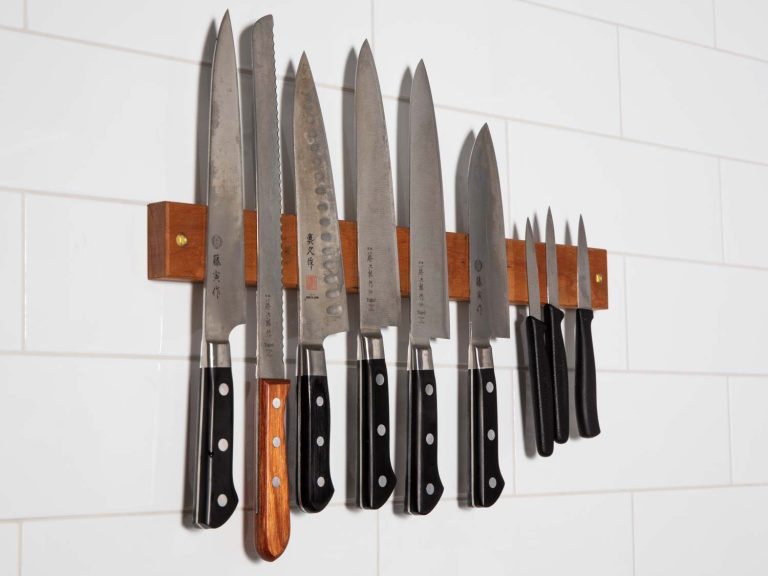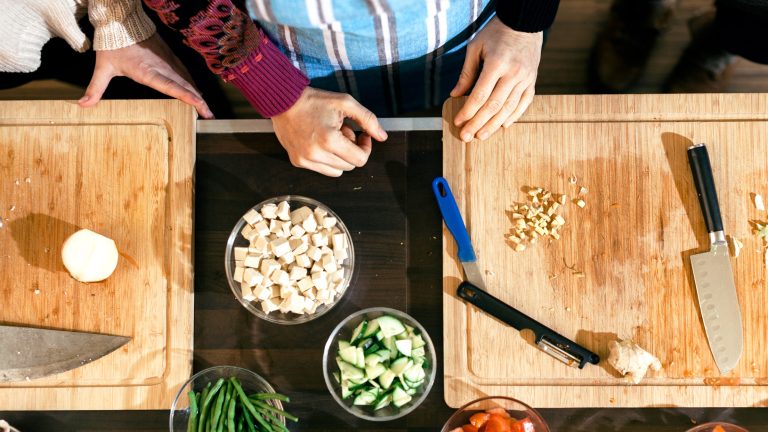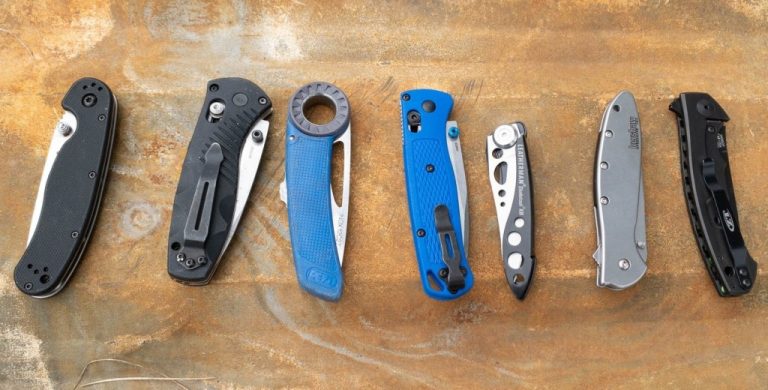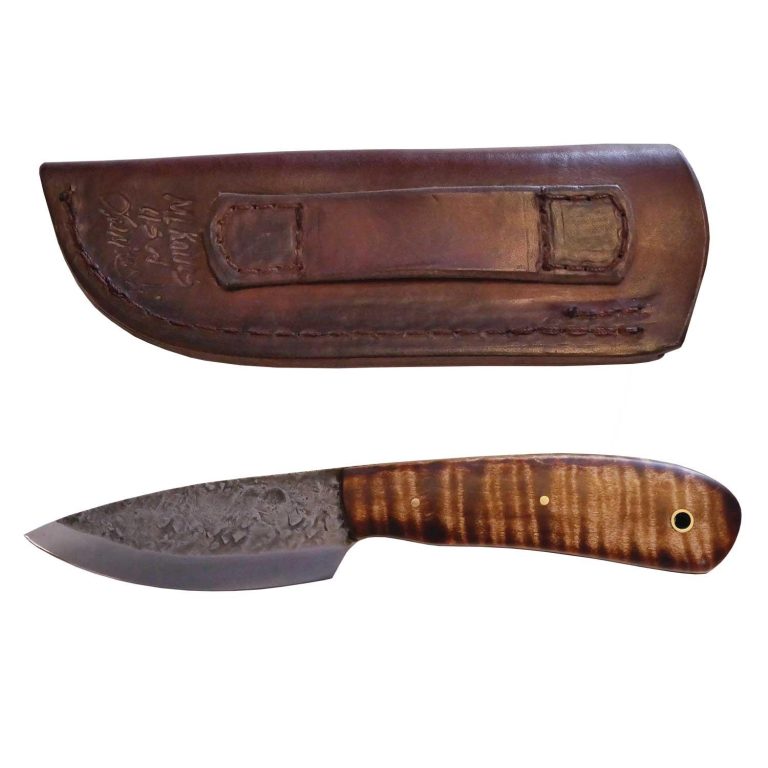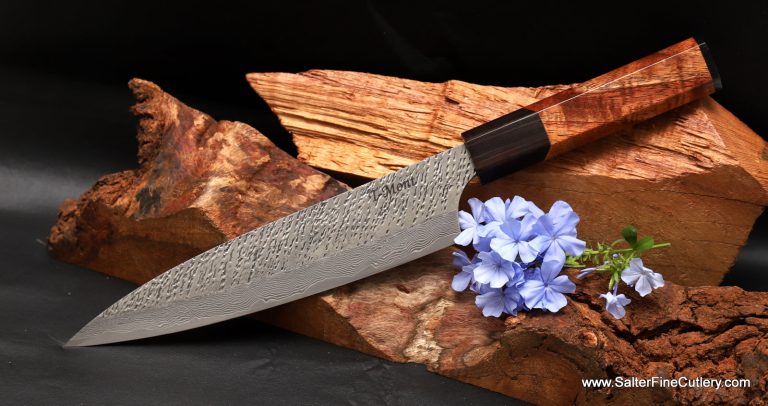Essential Kayaking Knife Types for Safety And Survival
Kayaking knife types for safety and survival include folding knives and fixed blade knives. These knives are essential for cutting ropes, fishing lines, and assisting in water rescues while kayaking, ensuring your safety and survival in emergency situations.
As every kayaker understands the importance of having the right equipment on hand, a reliable and well-designed knife is a crucial tool to have in your kayaking gear. Whether you are an experienced kayaker or a beginner, having a knife that is specifically designed for kayaking can provide peace of mind and serve as a valuable asset in case of unexpected accidents or emergencies on the water.
With various options available in the market, it is important to choose a knife that meets your needs and preferences, ensuring that you are always prepared and safe while enjoying your kayaking adventures.

Carrying The Right Knife On A Kayaking Adventure
Carrying the right knife is crucial for safety and survival on a kayaking adventure. Different types of kayaking knives are essential tools for cutting rope, freeing yourself from entanglements, and ensuring a safe and successful trip.
Kayaking is an exhilarating outdoor activity that allows you to explore picturesque waterways and reconnect with nature. However, like any adventure sport, there are inherent risks involved. It is crucial to prioritize safety and be prepared for unexpected situations that may arise during your kayaking trip.
One essential item that should never be overlooked is a reliable and purposeful knife. Carrying the right knife can make a significant difference in ensuring your safety and survival on the water. Let’s delve deeper into the importance of having the right kayaking knife and its role in emergency situations.
Safety Measures During Kayaking:
- Secure equipment: Ensure that your kayak is in good condition and all essential equipment, including a properly fitting life jacket, is in place.
- Buddy up: Always kayak with a partner or as part of a group, as it is safer and more enjoyable to have someone watching your back.
- Weather awareness: Keep a close eye on weather forecasts and avoid kayaking during adverse weather conditions, including strong winds, thunderstorms, or heavy rainfall.
- Know your limits: Assess your kayaking skills and only venture into waters that align with your capabilities and experience level.
- Stay hydrated and wear sunscreen: Keep yourself hydrated and protect your skin from harmful UV rays by applying a waterproof sunscreen before heading out.
- Maintain a safe distance: Be cautious of other watercraft and maintain a safe distance to prevent collisions and accidents.
Role Of A Knife In Emergency Situations:
- Self-rescue: A knife can assist in freeing yourself from tangled ropes or fishing lines that may pose a threat to your safety while kayaking.
- First aid: In emergency situations, a knife can be used for cutting bandages, splints, or other materials necessary for providing first-aid to yourself or others.
- Escape from entrapment: If your kayak becomes wedged in tight spaces or submerged, a knife can be used to cut your way out and regain freedom.
- Preparing for survival: In the unfortunate event of capsizing or getting stranded, a knife can be invaluable for building a shelter, starting a fire, or procuring food if needed.
- Signaling for help: A knife can be used to create reflector surfaces or cut branches to make visible signals, aiding search and rescue teams in locating you more quickly.
Different types of kayaking knives:
- Folding knives: These compact knives offer portability and safety, as the blade can be folded into the handle when not in use.
- Fixed-blade knives: Known for their durability and strength, fixed-blade knives are ideal for more demanding situations and heavy-duty tasks.
- Blunt-tip knives: Designed to reduce the risk of accidental punctures or injuries, blunt-tip knives are suitable for cutting ropes, lines, and other materials without damaging the surrounding surfaces.
- Serrated knives: With their saw-like teeth, serrated knives are excellent for cutting through tougher materials, such as thick ropes or dense vegetation.
- Sheath knives: These knives come with a protective sheath that can be easily attached to your kayak or gear, ensuring quick access during emergencies.
By carrying the right knife for kayaking adventures, you can enhance your safety and preparedness in case of unforeseen circumstances. Remember to familiarize yourself with your knife’s features and practice using it in a controlled environment before your kayaking trip. Stay safe, enjoy your adventures, and make the most out of your kayaking experience!
Fixed Blade Knives: Sturdy And Reliable
Discover the reliability of fixed blade knives for kayaking. These sturdy tools are essential for safety and survival on the water, providing the strength and durability needed in challenging situations.
Whether you are a seasoned kayaker or just starting out, equipping yourself with the right tools is crucial for safety and survival on the water. One essential piece of equipment that every kayaker should consider is a fixed blade knife.
Fixed blade knives are strong, durable, and reliable, making them an ideal choice for kayaking adventures. In this section, we will explore the features of fixed blade knives, the importance of choosing the right blade length, and the benefits that these knives offer for kayaking.
Features Of Fixed Blade Knives:
- Solid construction: Fixed blade knives are designed with a single, unbreakable piece of steel, providing stability and strength. This construction makes them less prone to bending or snapping, even with intense use.
- Full tang: Fixed blade knives have a full tang, which means that the knife blade extends the entire length of the handle. This design enhances the knife’s durability and helps with tasks that require more force, such as cutting ropes or branches.
- Simple and straightforward: Unlike folding knives, fixed blade knives have no moving parts or hinges, making them easier to clean, maintain, and operate. They are ready for action whenever you need them.
- Sheath included: Most fixed blade knives come with a sheath, which allows for safe storage and quick access during emergencies. The sheath can be attached to your kayak or worn on your belt for easy reach.
Choosing The Right Blade Length:
- 4-6 inches: A blade length of 4-6 inches is suitable for most kayakers. It offers the perfect balance between versatility and manageability. This length is ideal for tasks such as cutting ropes, preparing food, or even self-defense if needed.
- Longer than 6 inches: While longer blades can be beneficial in specific situations, they may be cumbersome in the confined space of a kayak. Moreover, they require more skill and expertise to handle safely. It is recommended to consult with experts or experienced kayakers before opting for a longer blade length.
Benefits Of Fixed Blade Knives For Kayaking:
- Reliable cutting tool: Fixed blade knives provide a dependable cutting tool that can assist in various kayaking scenarios. They can be used for cutting fishing lines, freeing tangled gear, or even creating improvised shelter or fire-starting devices if needed.
- Emergency preparedness: Accidents can happen, and having a fixed blade knife at your disposal increases your chances of being prepared for unexpected situations. It can be a valuable tool for self-rescue or assisting others in need.
- Versatility: Fixed blade knives are multifunctional, making them useful for various tasks beyond kayaking. Whether it’s camping, hiking, or other outdoor activities, these knives can be your go-to tool.
When it comes to safety and survival during kayaking adventures, a fixed blade knife can be a lifeline. Its sturdiness, reliability, and versatility make it a vital companion for any kayaker. So, consider investing in a high-quality fixed blade knife that suits your needs and embark on your next kayaking journey with confidence.
Folding Knives: Compact And Versatile
Folding knives are compact and versatile tools for kayaking, offering safety and survival benefits. These knives come in various types, designed to handle different situations on the water, ensuring kayakers are prepared for any emergency.
Advantages Of Folding Knives For Kayakers
Folding knives are a popular choice among kayakers due to their compact size and versatile nature. Here are some advantages of using folding knives for safety and survival while kayaking:
- Portability: Folding knives are designed to fold into a compact size, making them easy to carry in your pocket or attach to your gear. This portability ensures that you always have a knife readily available when needed.
- Safety: Folding knives usually feature a locking mechanism that secures the blade in place when open. This prevents accidental folding of the blade while in use, reducing the risk of injuries.
- Versatility: Folding knives come in various designs and often include multiple tools or features, such as blades, serrated edges, bottle openers, and screwdrivers. These additional functionalities make folding knives versatile tools for various situations during kayaking.
- Easy storage: When not in use, folding knives can be folded and stored safely, minimizing the risk of any mishaps or injuries while on your kayak.
Factors To Consider When Selecting A Folding Knife
Choosing the right folding knife for kayaking requires careful consideration of certain factors. Here are some essential factors to keep in mind:
- Blade material: Opt for a folding knife with a stainless steel blade that can withstand exposure to water and moisture without rusting or corroding. Look for high-quality blade materials like stainless steel or titanium.
- Blade length: Consider the blade length that suits your specific needs. While longer blades offer more cutting power, they might be more challenging to handle in a confined space like a kayak. Choose a blade length that strikes the right balance between utility and manageability.
- Locking mechanism: Check for a reliable locking mechanism to secure the blade in the open position. This feature ensures the knife remains safely locked during use, minimizing the risk of accidental folding and potential injuries.
- Grip and ergonomics: Look for a folding knife with a comfortable and secure grip. The handle should be ergonomic and provide a firm hold, even in wet conditions.
- Weight: Consider the weight of the folding knife as carrying heavy gear can be cumbersome while kayaking. Opt for a lightweight yet durable option that won’t weigh you down.
- Ease of maintenance: Choose a folding knife that is easy to clean and maintain. Look for features like rust-resistant materials and accessible folding mechanisms for hassle-free maintenance.
Popular Folding Knife Designs For Kayaking
There are several popular folding knife designs specifically suited for kayaking. Here are some notable options:
- Clip Point: Designed with a sharp and controllable tip, clip point folding knives offer excellent precision for various tasks, such as cutting ropes or food preparation.
- Tanto: Tanto blades feature a strong and durable design with a thick spine and reinforced tip. These folding knives are ideal for tasks that require high piercing strength and resilience.
- Serrated Edge: Folding knives with a serrated edge are particularly useful for cutting through tough materials like ropes or branches. The serrations provide enhanced cutting power and grip.
- Rescue Knife: This specialized folding knife design often includes additional features like rope cutters, glass breakers, and seatbelt cutters. Rescue knives are specifically designed to assist in emergency situations during kayaking.
- Multi-tool: Folding knives with integrated multi-tools offer added versatility. These knives can include features like screwdrivers, bottle openers, can openers, or wrenches, making them handy for various kayaking needs.
Remember to choose a folding knife that fits your specific requirements and preferences when it comes to safety and survival during kayaking adventures.
Rescue Knives: Specialized Tools For Water Safety
Discover the essential kayaking knife types designed for safety and survival on the water. Rescue knives are specialized tools that provide peace of mind during water activities, ensuring you’re prepared for any emergency. Stay safe while enjoying your kayaking adventures with the right equipment.
Overview Of Rescue Knives:
Rescue knives are specialized tools designed to ensure water safety during kayaking excursions. These versatile blades are specifically crafted to handle difficult situations, such as rope cutting, self-rescue maneuvers, and assisting others in distress. Whether you’re a novice kayaker or an experienced adventurer, carrying a reliable rescue knife is crucial for both safety and survival on the water.
Key Features Of A Rescue Knife:
When choosing a rescue knife for kayaking, there are several key features to consider. These features ensure that the knife is efficient, reliable, and easy to use in emergency situations. Here are the important characteristics to look for:
- Blunt Tip: A rescue knife should have a rounded or blunt tip to minimize the risk of accidental puncture injuries during water rescues.
- Serrated Edge: A serrated blade allows for effortless cutting through ropes, webbing, or fishing lines, providing quick and efficient assistance in emergency scenarios.
- Stainless Steel: Opt for a knife with a stainless steel blade to ensure durability and resistance to corrosion, even in saltwater environments.
- Locking Mechanism: A reliable locking mechanism is crucial to prevent accidental closure of the knife while you’re using it, ensuring your safety during critical actions.
- Handle Grip: Look for a knife with a secure, non-slip grip to maintain control even when wet, ensuring precise handling and reducing the risk of accidents.
Applications Of Rescue Knives In Kayaking Scenarios:
Rescue knives have various applications in kayaking scenarios, providing invaluable assistance when navigating challenging waters and aiding in emergency situations. Here are some common scenarios where rescue knives play a vital role:
- Self-Rescue: In the event of entanglement, a rescue knife can be used to cut yourself free from ropes, lines, or other obstructions, allowing you to regain control and continue your kayaking adventure.
- Assisting Others: If you encounter another kayaker in distress, a rescue knife can help free them from entanglement or assist in cutting their kayak loose from an obstacle, ensuring their safety and facilitating rescue efforts.
- Emergency First Aid: With its sharp blade, a rescue knife can be utilized to cut clothing or materials in emergency medical situations, providing quick access for administering first aid or treating injuries.
- Survival Tool: In unforeseen circumstances where survival is at stake, a rescue knife can be used for tasks such as building shelters, gathering firewood, or fishing, making it an essential tool for outdoor enthusiasts.
Remember, investing in a high-quality rescue knife and practicing its proper usage can significantly enhance your kayaking safety measures. Stay prepared, stay safe, and enjoy your kayaking adventures to the fullest!
Maintenance And Care Tips For Kayaking Knives
For safe and effective kayaking, it’s essential to know how to maintain and care for your kayaking knives. Learn about the different types of knives available for safety and survival on the water.
Keeping your kayaking knife in top-notch condition is crucial for both safety and survival while out on the water. Proper maintenance and care will ensure that your knife is always ready to perform when it matters most. By following these simple tips, you’ll be able to extend the lifespan of your knife and optimize its performance.
Proper Cleaning And Storage Techniques:
- Rinse the blade with fresh water after every use to remove any salt, sand, or debris that may have accumulated.
- Use a mild detergent or soap to gently clean the blade, avoiding abrasive materials that could scratch or damage it.
- Dry the knife thoroughly, making sure to remove any moisture to prevent rust or corrosion.
- Store the knife in a dry place, away from moisture or extreme temperatures that could affect its integrity.
- Consider using a protective sheath or a knife rack to keep the blade safe and secure.
Sharpening And Maintaining The Blade:
- Regularly check the sharpness of the blade and sharpen it when necessary to ensure optimal cutting performance.
- Use a sharpening stone or a knife sharpener specifically designed for kayaking knives.
- Follow the manufacturer’s instructions carefully when sharpening the blade to avoid any accidents or damage.
- Keep the blade well-oiled to prevent rust or corrosion. Apply a thin layer of oil, wipe off any excess, and store it in a dry place.
Regular Inspections And Evaluation For Optimal Performance:
- Inspect your kayaking knife before each use to ensure that it is in perfect working condition.
- Check for any signs of damage, such as loose handles or blades, and address them promptly.
- Evaluate the overall performance of the knife and consider upgrading to a more reliable model if necessary.
- Test the functionality of any additional features, such as serrated edges or rope-cutting notches.
- Seek professional assistance if you are unsure about any maintenance or repair tasks.
By following these maintenance and care tips, you can ensure that your kayaking knife remains a reliable tool for safety and survival on your adventures. Remember, a well-maintained knife could be the difference between a successful excursion and a potential disaster. Stay prepared, stay safe!
Conclusion And Final Thoughts
Kayaking knives offer crucial safety and survival benefits for adventurous water enthusiasts. With a variety of types available, these essential tools provide peace of mind and preparedness for any unexpected circumstances while out on the water. Whether it’s for cutting ropes, freeing tangled gear, or even self-defense, a quality kayaking knife is a must-have for any kayaker.
Kayaking is an adventurous water sport that offers moments of serenity as well as the thrill of conquering rapid currents. Whether you are a seasoned kayaker or just starting out, one important item to consider is a reliable and versatile kayaking knife.
Having the right knife can provide safety and even make a difference in survival situations. In this section, we will emphasize the importance of adopting safety practices, discuss how to choose the right knife based on personal preferences, and provide final recommendations for selecting a suitable kayaking knife.
Importance Of Adopting Safety Practices:
- Always prioritize safety: Follow these essential safety practices when kayaking:
- Wear a personal flotation device (PFD) to ensure buoyancy and safety in case of accidents.
- Know and adhere to the rules and regulations of the water body you are kayaking in.
- Familiarize yourself with basic kayaking techniques, including proper paddling and efficient strokes, to maintain control and stability.
- Never kayak alone – having a buddy or group can provide help in emergency situations.
- Stay aware of weather conditions and forecast to avoid unexpected hazards.
Choosing The Right Knife Based On Personal Preferences:
- Consider the blade type:
- Folding blades are compact and convenient for storage but might require two hands to deploy.
- Fixed blades provide quick access and are more robust, but may be bulkier to carry.
- Evaluate the blade material:
- Stainless steel blades are resistant to corrosion but may require sharpening more frequently.
- Titanium blades offer exceptional strength and durability while being resistant to rust.
- Carbon steel blades are sharp and retain their edge well, but they need proper maintenance to prevent rusting.
- Look for essential features:
- A serrated edge can assist in cutting through ropes or webbing.
- A blunt tip reduces the risk of accidental punctures when handling the knife.
- Consider a knife with a sheath or secure attachment mechanism to keep it easily accessible.
Final Recommendations For Kayaking Knife Selection:
- Prioritize safety features:
- Opt for a knife with a bright-colored handle or blade for increased visibility in emergencies.
- Ensure the handle provides a comfortable and secure grip, even when wet.
- Assess the size and weight:
- Choose a knife that feels balanced in your hand and won’t hinder your movements.
- Consider the overall weight as excess weight could be cumbersome during long kayaking trips.
- Take personal preferences into account:
- Decide whether a knife with additional tools, such as a whistle or fire starter, would be beneficial for your needs.
- Seek recommendations from experienced kayakers or consult online reviews to gather insights from the kayaking community.
Remember, while having a kayaking knife is crucial, proper training in its usage and safety precautions are equally important. Prioritizing safety and making a well-informed decision when selecting a suitable kayak knife will not only enhance your kayaking experience but also ensure preparedness in unforeseen circumstances.
Conclusion
Choosing the right kayaking knife is essential for both safety and survival while on the water. It is important to consider the different types of knives available and their specific features, such as a blunt tip for preventing accidental punctures and serrated edges for cutting through various materials.
Additionally, ensuring that the knife is easily accessible and securely attached to your person or kayak can make all the difference in an emergency situation. Remember to prioritize durability and corrosion resistance, as well as features like a comfortable grip and a sheath that allows for easy retrieval.
By investing in a high-quality kayaking knife and carrying it with you on your adventures, you can feel confident and prepared to handle any unexpected challenges that may arise. Stay safe and enjoy your kayaking experiences to the fullest!

